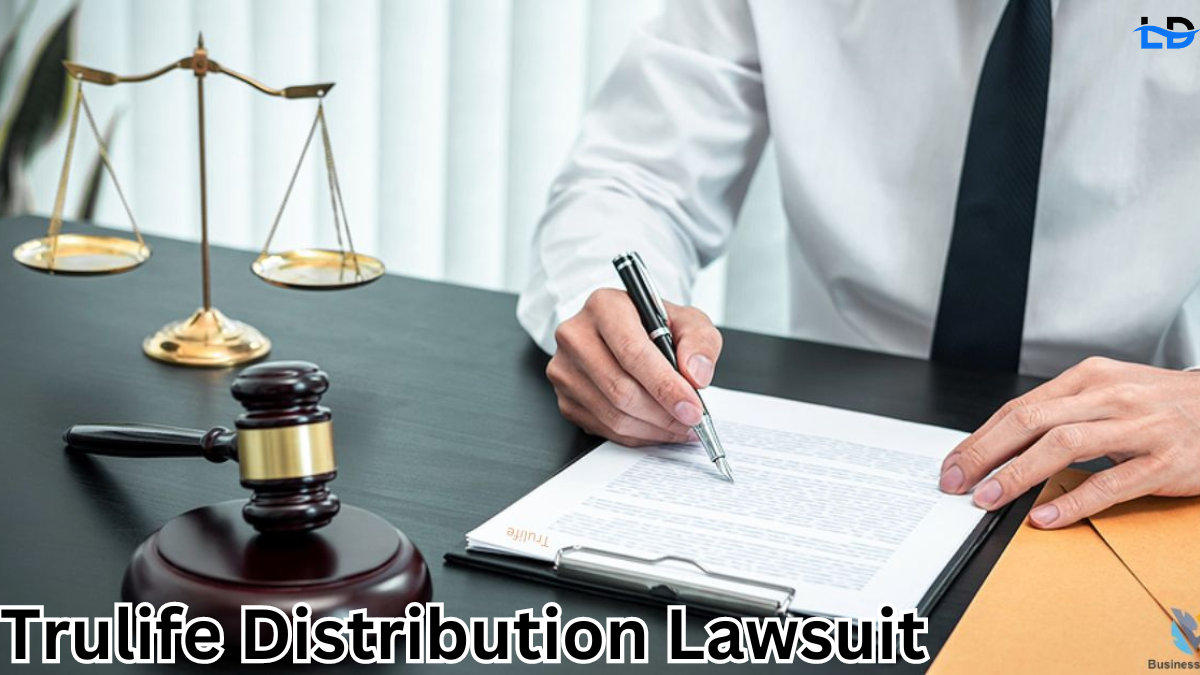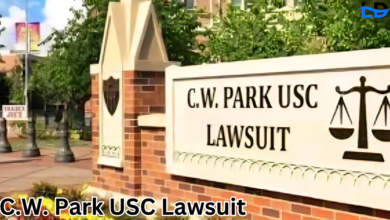The Trulife Distribution Lawsuit: A Comprehensive Overview

In recent years, the legal landscape for businesses involved in the distribution of healthcare and medical products has seen increased scrutiny. Among the notable cases is the Trulife Distribution lawsuit, which has captured significant attention due to its implications for the industry. This article provides an in-depth analysis of the Trulife Distribution lawsuit, exploring its origins, key issues, legal proceedings, and potential impacts on the industry and stakeholders.
Background of Trulife Distribution
Trulife Distribution is a prominent player in the healthcare and medical products sector, specializing in the distribution of various medical devices and equipment. Founded in [year], Trulife has built a reputation for providing high-quality products to healthcare providers and patients. However, despite its success, the company has faced legal challenges that have put its operations under the spotlight.

Origins of the Lawsuit
The Trulife Distribution lawsuit emerged from allegations of improper business practices and compliance issues. The origins of the lawsuit can be traced back to [specific date or event], when concerns were first raised about the company’s adherence to industry regulations and standards. The lawsuit involved multiple parties, including regulatory bodies, competitors, and affected customers, each raising specific claims against Trulife Distribution.
Key Issues in the Lawsuit
Several key issues have been central to the Trulife Distribution lawsuit. These issues reflect broader concerns about regulatory compliance, business ethics, and the responsibilities of companies in the healthcare sector.
1. Regulatory Compliance
One of the primary issues in the lawsuit is Trulife’s alleged failure to comply with regulatory requirements. The healthcare industry is heavily regulated, with strict guidelines governing the distribution of medical products. The lawsuit claims that Trulife failed to meet these standards, leading to potential risks for patients and healthcare providers. Specific allegations include:
- Inadequate Quality Control: Claims that Trulife’s quality control measures were insufficient, leading to defective or substandard products reaching the market.
- Failure to Report Issues: Allegations that the company failed to report known issues with its products to regulatory authorities, as required by law.
2. Business Practices
The lawsuit also addresses concerns about Trulife’s business practices. Allegations in this area include:
- Unethical Marketing Practices: Claims that Trulife engaged in misleading marketing practices, potentially exaggerating the benefits of its products or concealing risks.
- Fraudulent Claims: Accusations that the company made false claims about its products’ effectiveness or safety to secure business deals or gain a competitive edge.
3. Impact on Stakeholders
The lawsuit has had significant implications for various stakeholders, including:
- Patients: Concerns about the safety and efficacy of products distributed by Trulife have raised fears among patients who may have used these products.
- Healthcare Providers: Providers who relied on Trulife for medical equipment and supplies have faced challenges, including potential disruptions in their ability to deliver care.
- Regulatory Bodies: The case has prompted regulatory agencies to review their oversight and enforcement practices, aiming to prevent similar issues in the future.
Legal Proceedings and Court Rulings
The legal proceedings in the Trulife Distribution lawsuit have been complex, involving multiple stages and legal challenges. Here’s an overview of the key phases in the lawsuit:
1. Filing of the Lawsuit
The lawsuit was initially filed in [court name] on [date], with plaintiffs including [list of plaintiffs, such as regulatory agencies, competitors, or affected individuals]. The plaintiffs outlined their allegations in a detailed complaint, presenting evidence and arguments to support their claims against Trulife Distribution.
2. Pre-Trial Motions and Hearings
Following the filing, both parties engaged in pre-trial motions and hearings. These proceedings included:
- Discovery: Both sides conducted discovery to obtain evidence and information relevant to the case. This phase involved gathering documents, taking depositions, and interviewing witnesses.
- Motions to Dismiss: Trulife filed motions to dismiss the case, arguing that the claims were without merit or that the lawsuit did not meet legal requirements. These motions were reviewed by the court and ruled upon.
3. Trial
The trial phase involved presenting evidence and arguments before a judge or jury. Key aspects of the trial included:
- Presentation of Evidence: Both sides presented evidence to support their positions, including expert testimony, documents, and witness statements.
- Cross-Examination: Witnesses were cross-examined to challenge their credibility and the validity of their testimony.
4. Court Rulings and Settlements
The court eventually issued rulings on the various claims and counterclaims. In some instances, settlements were reached between Trulife and the plaintiffs. Key outcomes included:
- Verdict: The court issued a verdict on the primary claims, determining whether Trulife was liable for the alleged violations.
- Penalties and Remedies: If found liable, Trulife faced penalties, such as fines or corrective actions, and was required to implement remedies to address the issues raised in the lawsuit.
Implications and Impact
The Trulife Distribution lawsuit has had wide-ranging implications for the healthcare and medical distribution industry. These impacts include:

1. Regulatory Changes
The lawsuit has prompted regulatory bodies to review and potentially revise their regulations and enforcement practices. This may include:
- Stricter Compliance Requirements: Enhanced regulations and guidelines to ensure that companies meet high standards for product safety and quality.
- Increased Oversight: More rigorous oversight and monitoring of companies in the healthcare sector to detect and address compliance issues early.
2. Industry Practices
The case has influenced industry practices, leading to changes in how companies conduct business. Notable impacts include:
- Enhanced Transparency: Companies may adopt more transparent practices in marketing, reporting, and quality control to avoid legal issues and build trust with stakeholders.
- Focus on Ethics: There may be a heightened emphasis on ethical business practices and adherence to industry standards to prevent similar lawsuits.
3. Stakeholder Reactions
The lawsuit has elicited responses from various stakeholders:
- Patients: Increased awareness of the importance of regulatory compliance and product safety, leading to greater scrutiny of medical products and distributors.
- Healthcare Providers: A focus on ensuring that suppliers meet regulatory standards and provide reliable products to support patient care.
FAQs
1. What is the Trulife Distribution lawsuit about?
The Trulife Distribution lawsuit involves allegations of regulatory non-compliance and unethical business practices by Trulife Distribution, a company specializing in medical products.
2. When did the Trulife Distribution lawsuit begin?
The lawsuit began in [specific date], with claims filed by [plaintiffs, e.g., regulatory bodies, competitors] regarding Trulife’s failure to adhere to industry standards.
3. What are the main issues in the Trulife Distribution lawsuit?
Key issues include allegations of inadequate quality control, failure to report product issues, unethical marketing practices, and fraudulent claims about product effectiveness.
4. What has been the outcome of the Trulife Distribution lawsuit?
The outcome includes court rulings on the claims, potential penalties for Trulife, and settlements reached with plaintiffs. The case has also prompted industry and regulatory changes.
5. How has the Trulife Distribution lawsuit impacted the healthcare industry?
The lawsuit has led to increased scrutiny and regulatory changes, prompting companies to adopt stricter compliance measures, improve transparency, and focus on ethical practices.
Conclusion
The Trulife Distribution lawsuit serves as a significant case study in the healthcare and medical distribution industry. It highlights the importance of regulatory compliance, ethical business practices, and the need for robust quality control measures. The lawsuit’s outcomes and implications have far-reaching effects on the industry, prompting changes in regulations, industry practices, and stakeholder expectations.
As the legal proceedings continue and the industry adapts to the lessons learned from this case, it is essential for companies to prioritize compliance and ethical conduct. By doing so, they can contribute to a safer and more transparent healthcare environment, ultimately benefiting patients, providers, and the industry as a whole.


